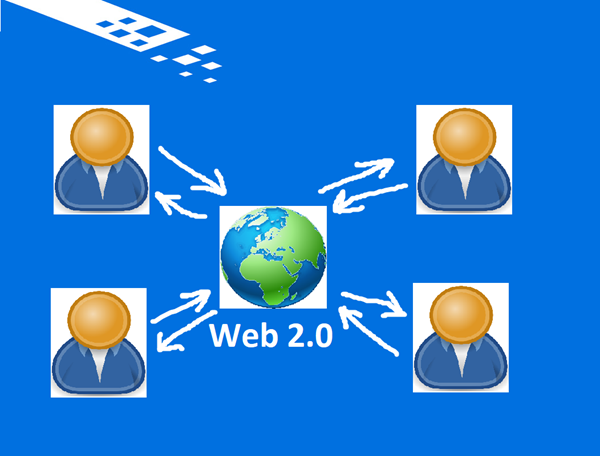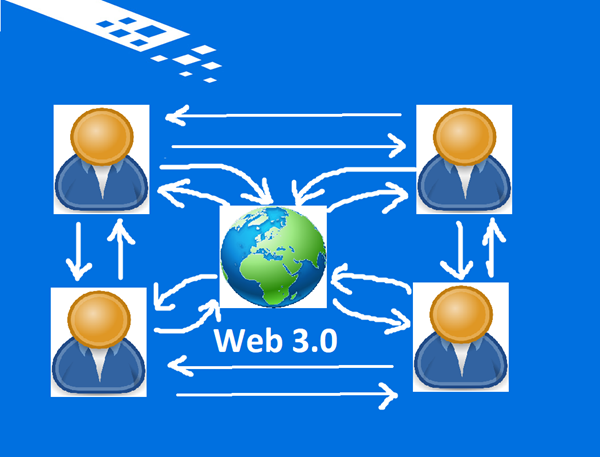irrespective of war, lack of infrastructure, censorship, sanctions
“I am no bird; and no net ensnares me: I am a free human being with an independent will.” – Charlotte Bronte
All the technologies in the world have been invented by humans to improve their lives. But the best technology is the one that promotes freedom and independence.
While using the internet, have you ever felt that your activity on the web is being monitored? And, the info is being used to show you the data or content as adverts best fit to manipulate you into believing this is what you want?
If you have ever felt it, you are not alone.
The web, as we know it to be, is controlled by tech giants who are offering their infrastructure to keep the web operational. These tech giants not only own your data, but they use your data to know your likes and dislikes. Then by using advanced analytics on your data, they try to trick you into spending more time and energy on platforms or products which generate revenue for these companies.
Suppose you can be tricked by showing adverts customized specifically for you. In that case, there is no brainer that this data can also be used for spying on you and controlling you by the governments who have at times engaged these tech giants in the past and might continue doing so.
This was not the case when the World Wide Web was created a few decades ago. A detailed comparison of the three iterations of the web along with detailed benefits can also be found in one of our previous blogs – What is Web 3 and why is it very important for you.
The Web started as a static Content Delivery Network or “read-only” web in which the users could go and only see static websites. Users did not have the right to express their opinion, and the ownership of the data displayed on the website was vested in the owners of the website. This was the version in which users could only send text emails without having the ability to send attachments.

Then with the advent of social media and e-commerce came the next evolution of the web, the “read-write” web. The read-write web or Web2 gave the power to users to generate their own data and content. This caused an explosion of data which required a massive amount of storage. Big tech giants stepped in and offered servers or infrastructure to store this data. Subsequently, these centralized entities started owning the data and using it to invade our privacy and control us. In his version of the web, users were able to send attachments by email.

The third generation of the web, Web3, a new decentralized version of its previous iteration, promises to offer stronger user control over data and lesser centralization by reducing the dominance of the big tech giants. We have also come across it as web3.
When users currently use the web, their computer uses the protocol, which finds the requested information stored at a fixed location, usually on a single server. Web3 or “read-write-execute” web uses Peer to Peer (P2P) technology, which helps computers find the data based on the requested content rather than based on the location of the data. The data or content can be stored in multiple copies and multiple locations at once. We call this technology blockchain.
In contrast with the “read-write” web server storage, i.e., infrastructure offered by big tech giants, Web3 will be using the infrastructure offered by the participants of the web, i.e., people like us. These participants are also referred to as nodes or validators who offer the infrastructure in lieu of web-generated rewards in the form of cryptocurrencies.
This reward is granted by the network only if the participants process and store the data diligently as required by the network and its users. Hence, this gives users stronger ownership of the data and better security of data compared to the previous iterations of the web.

As the data is stored online in encrypted form, in multiple storage locations, it not only provides better privacy but also offers decentralization. Hence, no centralized agency or government can control the network or limit access to the data stored on the network. The uncensored data will be available to users on their demand irrespective of any war-like situation or sanctions by any entity, as no single entity has any control.
In summary, the Web3 uses the infrastructure of the participants of the network, who are offering this infrastructure as per their free will. So, Web3 promises its users access to the internet in the absence of infrastructure offered by any government or any central entity.
Web3 is the technology that offers on-demand, unconditional access to the data, which is saved in multiple copies in multiple locations, on the storage infrastructure of a community formed by people like you and me. As the data is encrypted & outside the control of any entity, hence data content & its unconditional availability cannot be stopped or controlled by anyone.
Web3 will revolutionize cyberspace by giving its users the power to control their data with freedom and independence, which the previous iterations of the web lacked.
Why to Invest in DeFi Coins and Token | Mobile App Technology Stack | How to Buy Real Estate in the Metaverse | Blockchain Scalability Solutions | Public Blockchain Examples | Top Altcoins | What is Proof of Work in Blockchain | Crypto Cloud Mining | Best Place to Mint NFT | What is Stake in Crypto | What is a Governance Token | Benefits of Blockchain | What is Blockchain Security | Can Blockchain be Hacked | What is Crypto Metaverse | How to Keep Crypto Safe | Bitcoin VS Ethereum | What is a Crypto Whale | What is Staking in Crypto | Ethereum that are Compatible with the EVM
About the Author:
Puneet RST is a pan-world supply chain and advisory consultant across multiple industries who is now a full-fledged blockchain and crypto enthusiast believing in the power of Web 3 to transform society for good. You can follow him on Twitter.